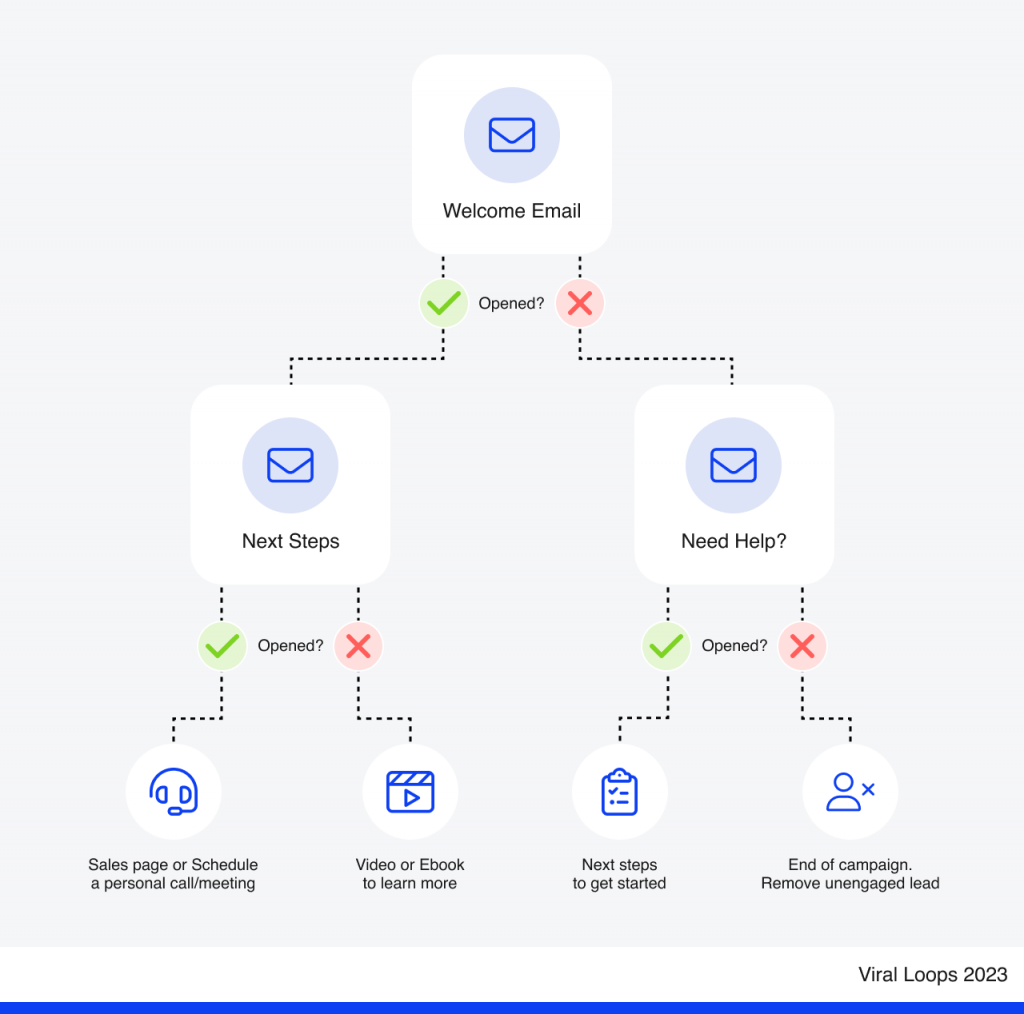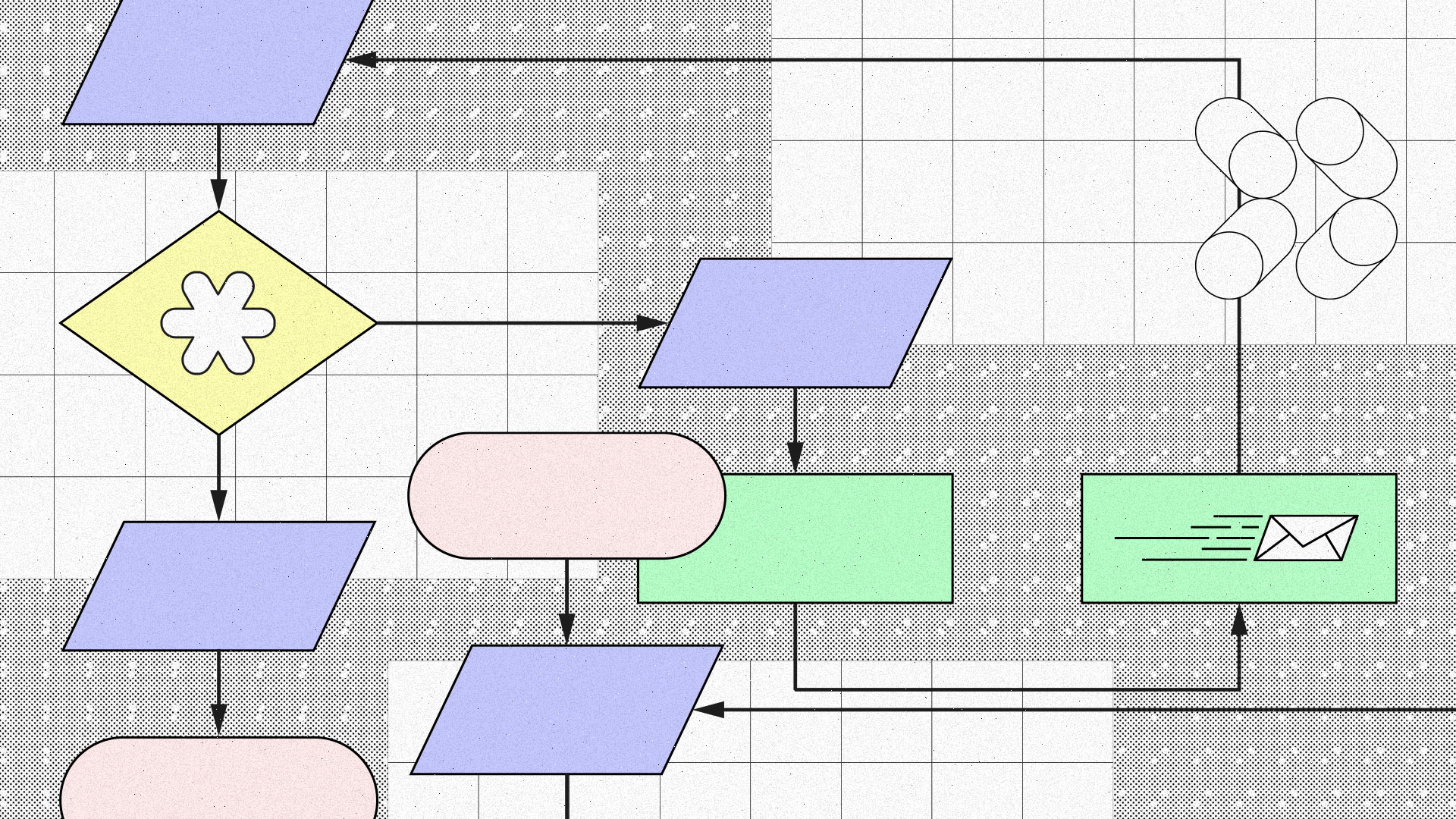You’ve just run a referral marketing campaign and generated loads of brand awareness. Success!
Well, it’s not over yet.
Running the referral marketing campaign is the first step. If you want to make the most of your campaign results, you’ll need to strategically reach and manage the leads you generate through the referral campaign. This is where marketing automation comes in.
Using automated email marketing is an important part of maximizing your referral success. In this guide, we’ll cover exactly how you can do this.
Understanding Marketing Automation
Marketing automation is the use of software tools to streamline and simplify marketing tasks and processes.
When we talk about marketing automation, we’re mainly focused on email marketing, lead generation and nurturing, and customer segmentation. All of these processes can be set up with automated workflows, which lets them work seamlessly together without you having to lift a finger.
The goal is to increase efficiency and effectiveness while also personalizing and improving the customer experience. With good marketing automation tactics, you can ensure the right people get the right marketing messages at the right time, every time.
When you run a referral marketing campaign, carefully setting up a marketing automation strategy is always a good idea. It will help you maximize the value of every lead you get from the referral campaign.
Why Use Marketing Automation After a Referral Campaign?
Using marketing automation after a referral campaign can help you access some great benefits that contribute to your overall marketing goals.
Increased Efficiency
Marketing automation allows you to automate repetitive tasks and processes, freeing up time for more strategic activities. This makes your life a lot easier, and it means you can focus your energy on the tasks that matter.
Personalized Experiences
Marketing automation enables you to personalize the customer experience based on their behaviors and preferences. This leads to higher engagement and conversion rates.
Scalability
Marketing automation can be scaled up or down to accommodate changes in marketing needs, making it ideal for post-referral campaigns that may generate large numbers of leads.
Better Data Management
Marketing automation platforms provide a centralized repository for all customer data, enabling you to better understand and segment your audience for more effective marketing efforts.
Increased ROI
By automating tasks and processes, marketing automation can help increase the return on investment (ROI) of your referral campaign by reducing costs and increasing conversion rates.
Improved Analytics
Marketing automation provides a wealth of data and insights into the performance of your campaigns. This enables you to make informed decisions and adjust your strategy as needed.
So, by using marketing automation after a referral campaign, you can capitalize on the momentum generated by the campaign to deliver targeted and personalized experiences to your leads and customers.
The results? increased conversions and revenue.
How to Use Marketing Automation After a Referral Campaign
Marketing automation and referral marketing go together perfectly. If you run a referral marketing campaign to generate brand awareness and new business leads, you’ll need to make sure you follow this up with the right tactics to turn that awareness into sales.
Here’s how you can do it.
1. Create and Promote Your Referral Campaign
First, you need to have your referral marketing campaign up and running. You can easily do this by creating it with a Viral Loops template. Promote your referral campaign to generate as much awareness around it as possible.
And now with Viral Loops Rewards, your account is completely equipped to connect and send actual rewards. Through integrations with Stripe and Tremendous, sending out gifts is now a seamless process. Making this new feature a guarantee that your campaign collects a great amount of satisfaction and success!
Make sure to check out our Youtube video on Referral Rewards for more info!👇
You can run all kinds of referral marketing campaigns with all kinds of goals. For example, you could run campaigns for launching a new product, launching a new business, or even growing your newsletter. Whatever the case, you’ll need a place to send everyone who enters your campaign. This is where our next step comes in.
2. Use an Integrated Marketing Solution
Running the referral campaign is only the first step. The next step is to actually utilize the leads you generated through the referral process. To do this, you’ll need to use an integrated marketing solution that lets you add leads directly to a database.
You can use Wishpond to do this. Wishpond is fully integrated with Viral Loops, so the two platforms work seamlessly together. Once you generate referrals from your Viral Loops campaign, all leads can be entered into the Wishpond all-in-one marketing system. This is where the magic begins.
3. Add Leads to Your CRM
Now you can add all leads from your referral campaign straight to your leads management database in Wishpond. This is the place you will manage your marketing automation strategies from.
The first step would be to segment these leads into a specific list based on the fact that they entered the referral campaign. Once you know where the leads came from, you’ll be able to send them more relevant content. This helps you increase personalization, helps introduce your brand more strategically, and it can enhance the buyer’s journey in a big way.
So, create a list for new referrals and add all leads to this list. Now you have a segment where you know where they came from. You know how they were introduced to your brand, and hopefully, you know their interest or intent (the reason they entered the referral program).
4. Set Up an Automated Email Sequence
Now you can create a series of relevant and personalized emails that guide your referral leads through the sales funnel and towards conversion. These will send out to the referral leads automatically based on a trigger. In this case, the trigger will be a referral campaign sign-up to initiate the series of emails.
Set up an email drip sequence that introduces your brand and welcomes the prospect. This is important because they might be confused if they suddenly start receiving marketing emails from you without knowing what you do.
The idea is to set up a series of emails, gently moving the prospect through your funnel. You could share content, stories, or anything else. Just make sure to consider their journey.
A good strategy here is to offer variations of your drips. For example, you send a prospect an automated email (email A). If they click the CTA, they get sent email B. If they don’t, they get sent email C. And so you go.
This is a great strategy to ensure you target people with relevant content and optimize and personalize their journey as much as possible.

5. Segment Leads Again
Once you have completed the drip sequence, you can use automation to segment your leads once again. This can be a great way to personalize your offer even more.
To do this, you’ll need to create triggers. Let’s say you need your drip by providing a discount code. Those who follow through with a purchase from that code can be put into a list. Those who don’t can be put on a different list. Now you can target each list with relevant content.
Setting Up Marketing Automation Workflows
There are some important considerations to make when establishing your marketing automation workflows. Here are a few steps and tips to follow.
- Define your goals: Determine what you want to achieve with your marketing automation workflows, such as generating first-time sales, enhancing customer engagement, or upselling. Of course, this needs to be related to the goal of your referral campaign.
- Segment your audience: Divide your audience into groups based on shared characteristics, such as behavior, location, or past purchase history, to personalize your marketing efforts.
- Identify the customer journey: Map out the stages of the customer journey, including awareness, consideration, and purchase, to determine the most effective touchpoints for marketing automation.
- Choose the right tools: Select marketing automation software that provides the features and functionality you need to execute your workflows, such as email marketing, lead scoring, and personalization.
- Create your workflows: Use the marketing automation software to design and set up your workflows. Use triggers, such as website visits or form submissions, to initiate automated marketing activities.
- Test and refine: Continuously test and refine your workflows to ensure their effectiveness and to improve the overall customer experience.
- Monitor performance: Regularly monitor the performance of your marketing automation workflows, using metrics such as open and click-through rates, conversion rates, and customer satisfaction to make informed adjustments and optimizations.
Tips for Using Email Marketing After Running a Referral Campaign
Now that you know how to set up automated marketing workflows after your referral campaign, here are a few tips to help you achieve the best results.
Segment Your Audience
Divide your email list into groups based on shared characteristics, such as behavior, location, or past purchase history, to personalize your marketing efforts.
Try to segment leads continually after each drip sequence. The more relevant email lists you have, the more personalized your campaigns can be.
Personalize Your Emails
Use the information you have about your audience to craft personalized, relevant, and engaging emails that build on the momentum of your referral campaign.
Optimize Subject Lines and Calls to Action
Make sure your subject lines are compelling, and your calls to action are clear and actionable to increase open and click-through rates.
Use A/B Testing
Experiment with different elements of your emails, such as subject lines, content, and calls to action, to determine what works best and continually improve your results.
Monitor Performance
Regularly monitor the performance of your email marketing efforts. Use email marketing metrics such as open and click-through rates, conversion rates, and customer satisfaction to make informed adjustments and optimizations.
Thank Your Referrers
Don’t forget to thank the people who referred their friends, family, and colleagues to your referral campaign. Personalized and relevant thank-you emails can help strengthen your relationships and encourage future referrals.
By following these tips, you can use email marketing effectively after running a referral campaign to build on its success and drive increased conversion and revenue.
Conclusion
Before you run a referral campaign, understand exactly what you’ll do with the leads your campaign generates. Using an automated email marketing strategy is ideal, as it lets you provide a personalized experience without requiring much effort from your side.
This is the best way to generate awareness, attract leads, and then engage them strategically. Get it right, and you’ll see just how much the right referral marketing strategy can help you grow your brand.
This post was written by the lovely team at Wishpond.—the parent company of Viral Loops.
